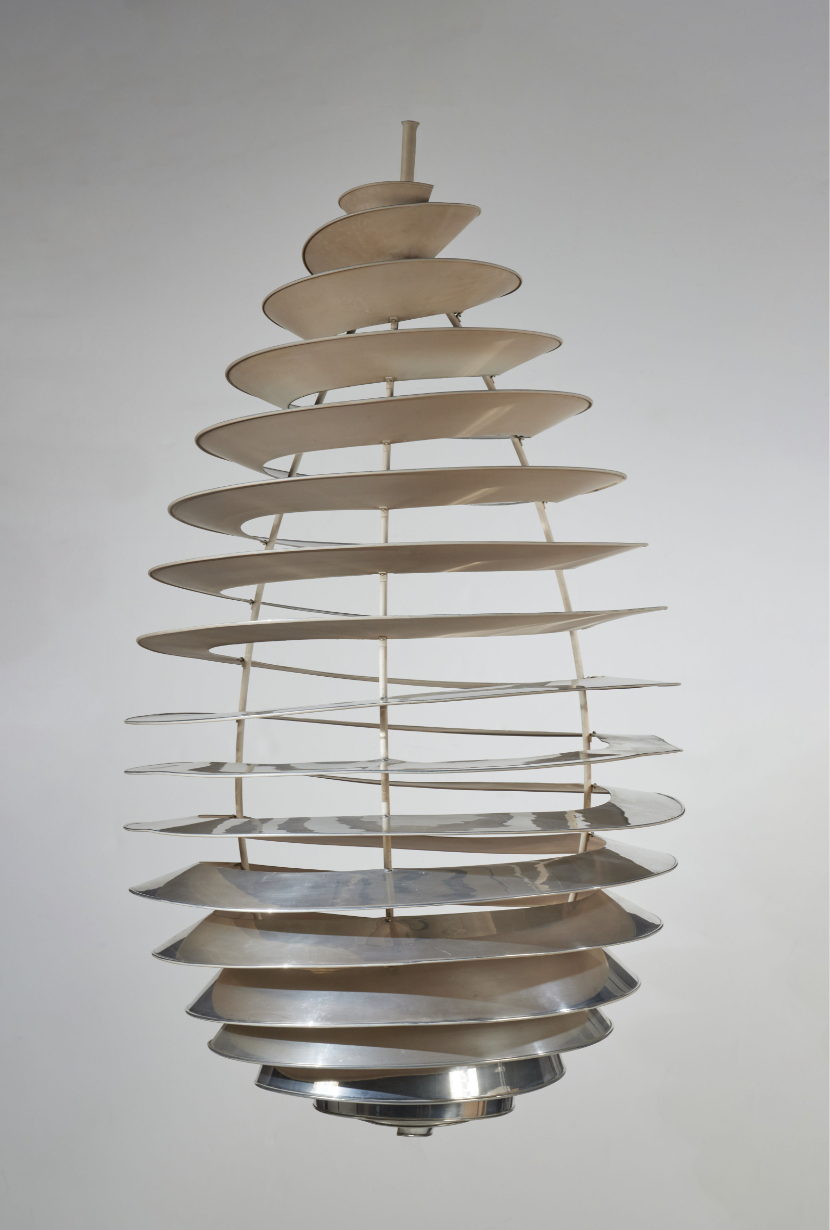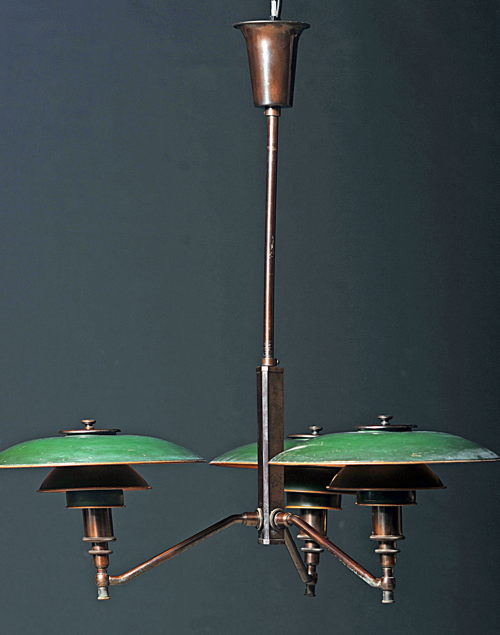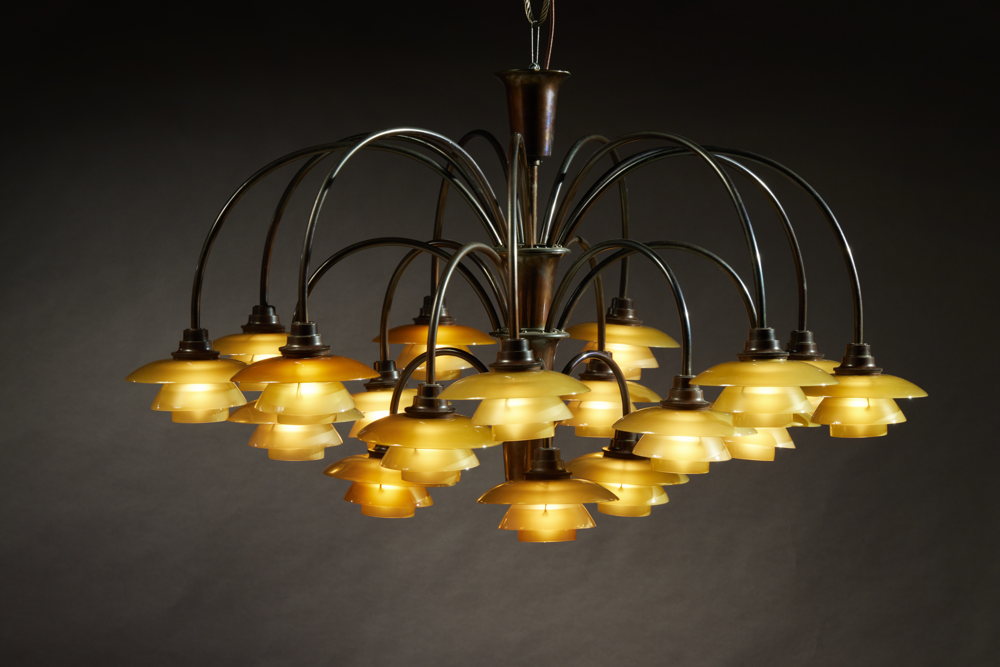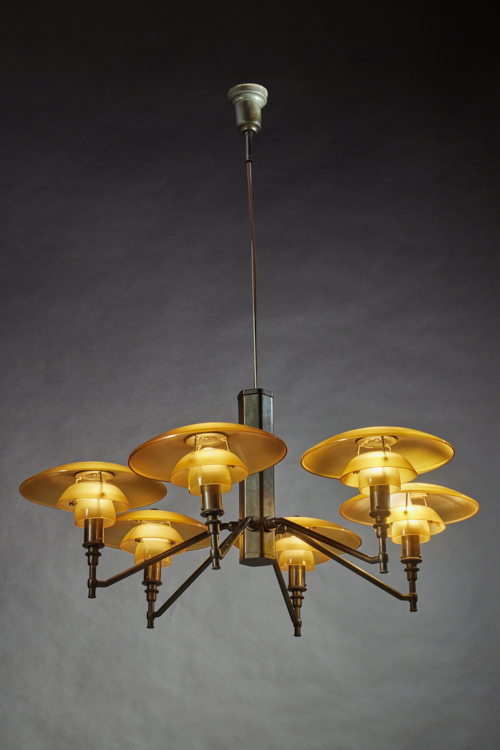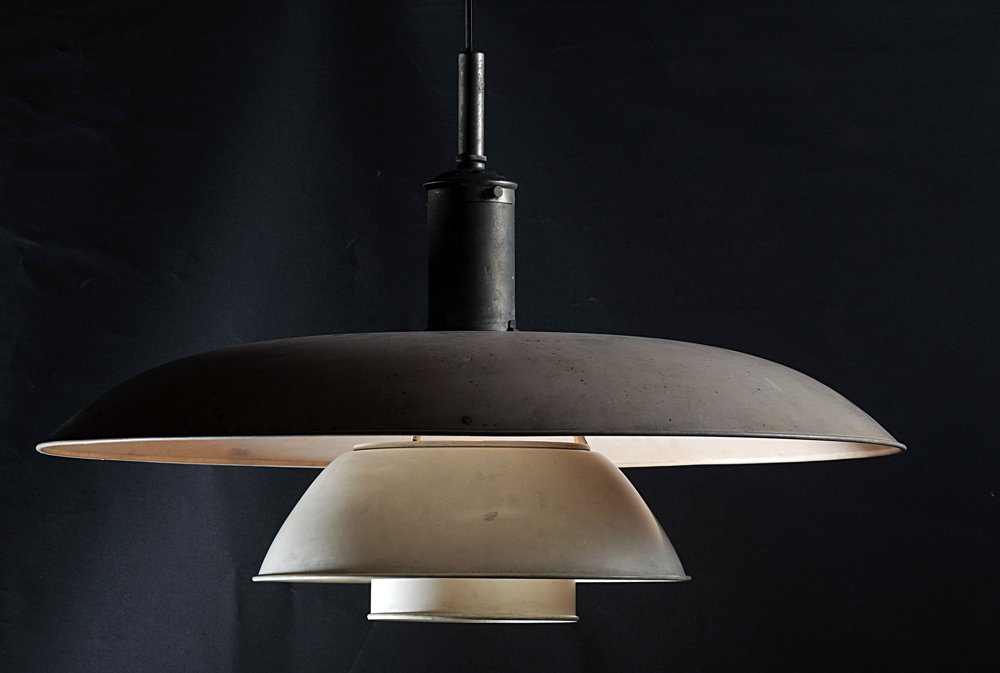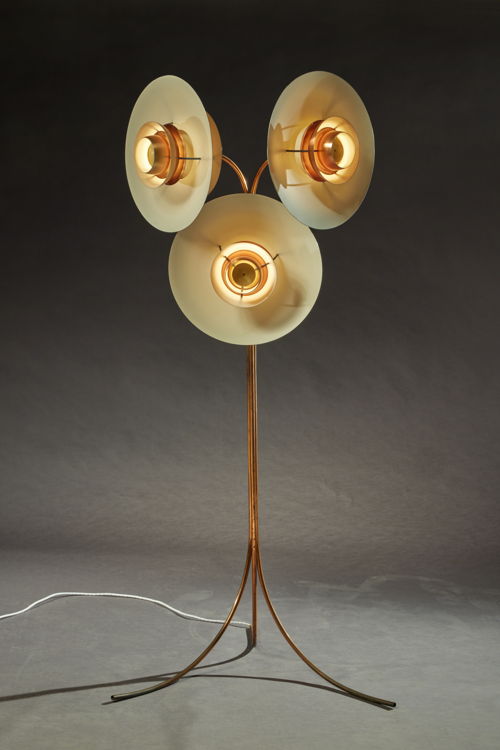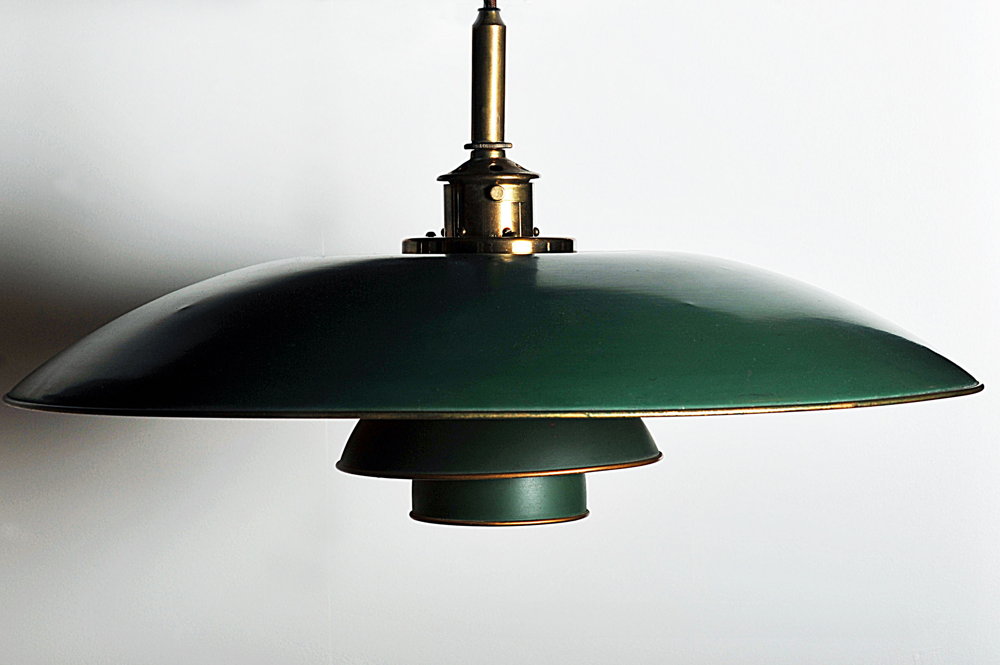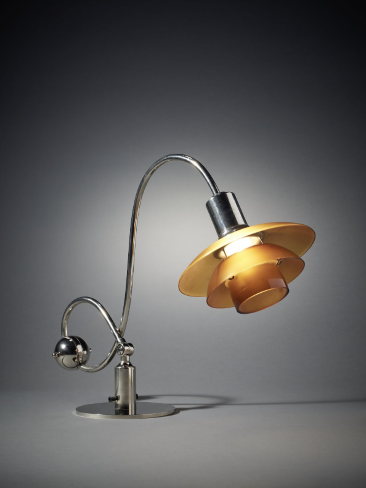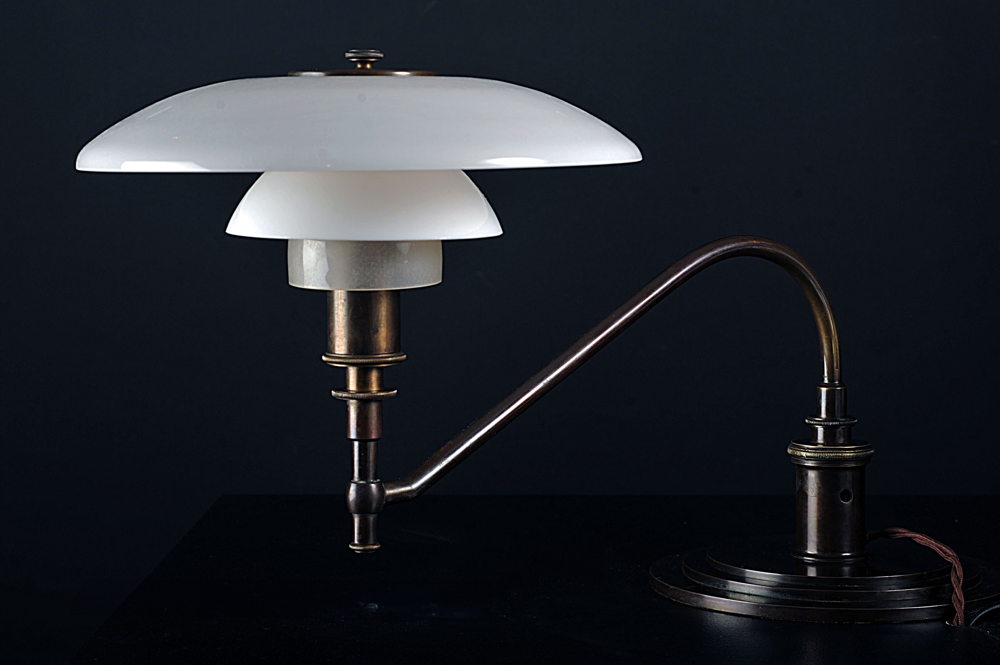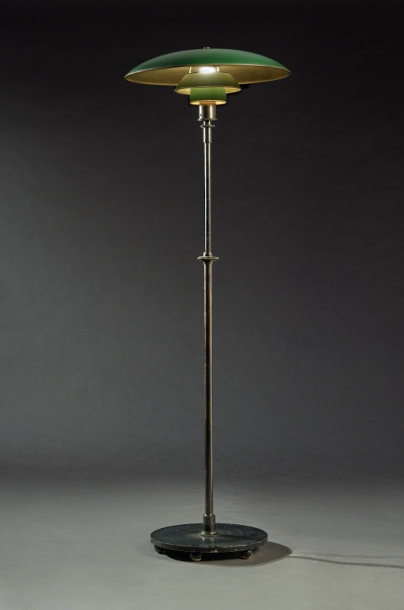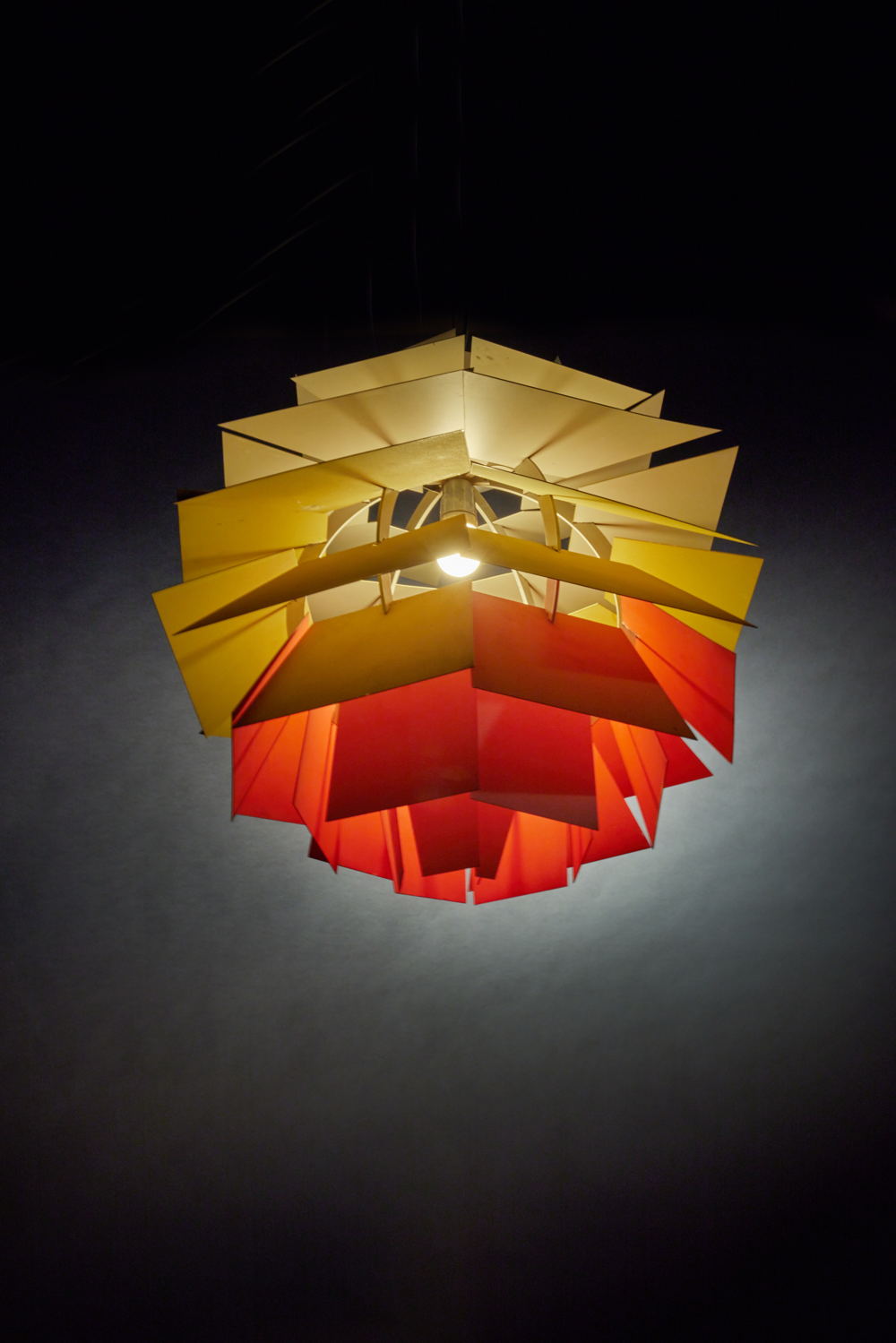Twelve Rare Louis Poulsen Lamps to Headline Sotheby's Important Design sale
Pieces come to sale for the first time to celebrate Danish lighting brand's 150th anniversary
November 27, 2024
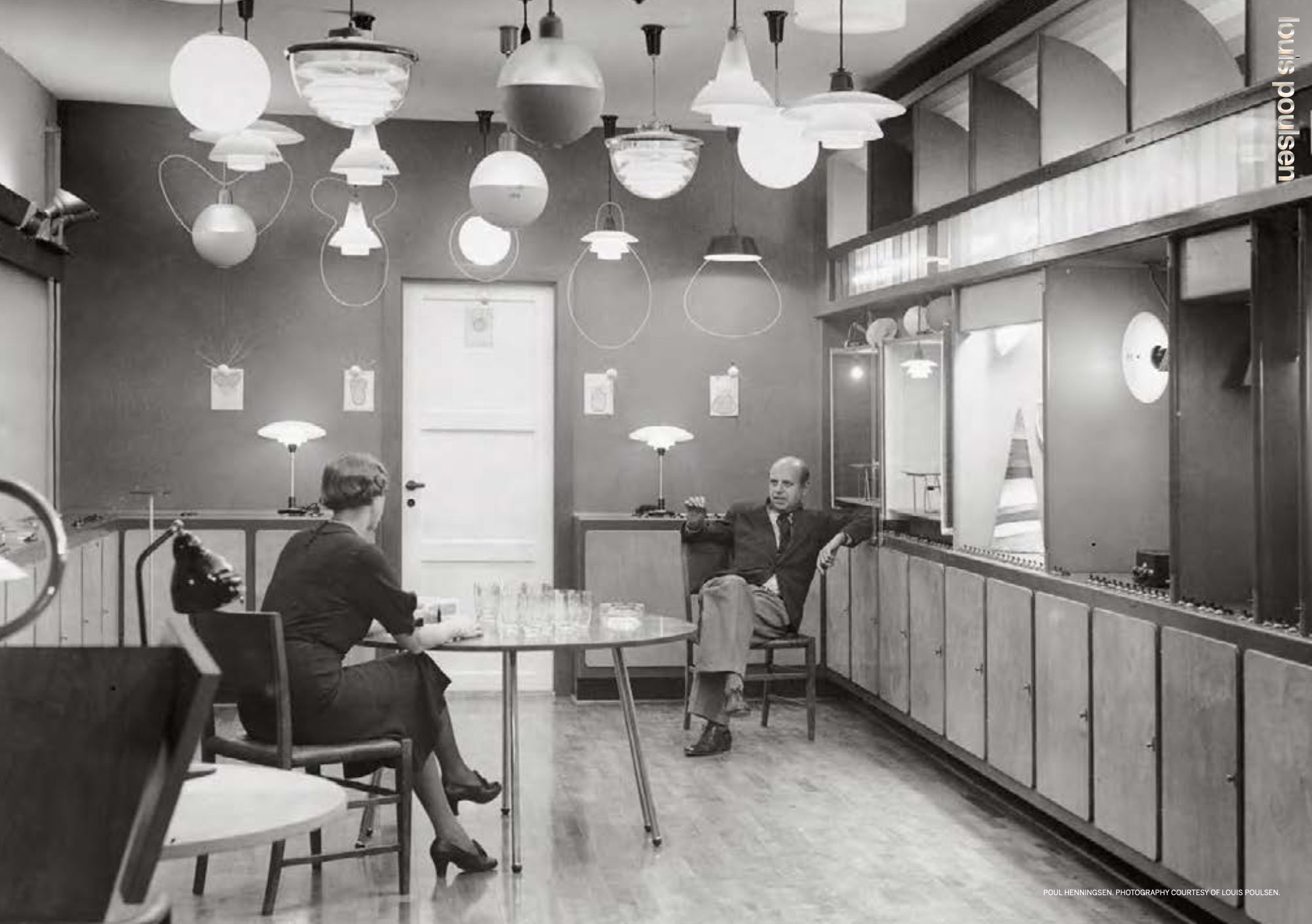
NEW YORK, DECEMBER 2024—On December 12, Sotheby’s will present twelve rare Louis Poulsen lamps designed by the late Danish designer Poul Henningsen (1894-1967), whose work transformed 20th-century design. Sotheby’s Important Design sale (Dec 7-12) in New York will feature Henningsen masterworks, including the PH Spiral Pendant (Est. $100,000-$150,000), a model of intricate craftsmanship designed for the University of Aarhus; “The House of The Day After Tomorrow” Artichoke Pendant (Est. $30,000-$50,000), a limited edition run of twenty created for Copenhagen’s “The House of The Day After Tomorrow” 1959 exhibition; and the PH 2/2 Piano (Est. $20,000 - $30,000), a remarkable early 1930s design that was created specifically to be placed on a piano.
Established in 1874, Louis Poulsen celebrates its 150th anniversary in 2024. To mark this milestone, the renowned Danish lighting brand has partnered with Sotheby’s for the first time to offer a rare collection of Poul Henningsen designs, carefully acquired from the archives of Louis Poulsen’s headquarters. These twelve lamps represent an important yet very limited selection of the brand’s complete collection and will be open for the public to view from December 7-11 at Sotheby’s headquarters in Manhattan. The brand acquired the pieces from Poul Henningsen expert and historian Steen Bo Anderson in 1999.
“We are honored to collaborate with Louis Poulsen for their landmark 150th anniversary, presenting this exceptional collection of Poul Henningsen’s masterworks. These rare lamps not only reflect Henningsen’s pioneering approach to modern lighting but also highlight the enduring influence of his designs on contemporary aesthetics and functionality.” — Cara Villinger, Sotheby's Head of 20th Century Design
Poul Henningsen’s groundbreaking work reshaped modern lighting. Renowned for his PH lamp series, debuting at the Paris International Exhibition of Decorative Arts in 1925, Henningsen pioneered an innovative approach to light diffusion, significantly reducing glare to create a warmer, more inviting ambiance. His longstanding collaboration with Louis Poulsen, which started in 1924, set new standards for functional and aesthetic lighting and influenced global design principles. His designs earned a loyal following amongst international architects such as Ludvig Mies van der Rohe (1886-1969), Alvar Aalto (1898-1976), and Le Corbusier (1887-1965), who respectively used it at Villa Tugenhdhat in Brno, Czech Republic, and Villa Savoye outside of Paris. To this day, the PH Artichoke and PH5 are some of the most recognizable lighting designs in the world, and Henningsen’s legacy endures as a cornerstone of Scandinavian design, revered for its blend of timeless elegance and profound impact on lighting and modern design.
"We're thrilled to culminate our 150th anniversary celebration by partnering with Sotheby's for this auction. We're opening up the Louis Poulsen archives to showcase the importance of these lamps as both a piece of design history and a look towards the next 150 years of Louis Poulsen. We look forward to showcasing these lamps to both established and emerging enthusiasts of Louis Poulsen, Poul Henningsen and 20th century design." — Søren Mygind Eskildsen, Chief Executive Officer at Louis Poulsen
WORKS COMING TO AUCTION THIS DECEMBER
No. 1
Poul Henningsen
“PH Spiral” Ceiling Light
circa 1967
executed by Louis Poulsen, Copenhagen
polished copper, brass, aluminum
47 ½ in. (120.5 cm) high
29 in. (73 cm) maximum diameter
Estimate: $100,000 - $150,000
The present ceiling lamp is a particularly rare variation on the “Spiral” chandelier designed in 1942 for the canteen of Aarhus University. This variant was commissioned in 1964 for the Headquarters’ Assembly Hall at the Danish Consumers Cooperative Society (‘COOP’) in Albertslund, outside Copenhagen. Virtually designed and constructed in the same manner as its earlier counterpart, the distinguishing factor that contributes to its scarcity and importance lies in the three different materials comprising the descending spirals: brass, copper, and aluminum.
No. 2
Poul Henningsen
“PH Spiral” Ceiling Light
circa 1943
executed by Louis Poulsen, Copenhagen
polished aluminum
47 ½ in. (120.5 cm) high
29 in. (73 cm) maximum diameter
Estimate: $50,000 - $70,000
Initially designed in 1942 for the main hall of the University of Aarhus, the PH Spiral was produced exclusively in small quantities as it was only available as a commission piece for large spaces. Based on the PH Globe design, cutting and brazing together the shades was noted as incredibly time-consuming for the time. Subsequently, the assembly of the lamp was considered particularly difficult.
No. 3
Poul Henningsen
“PH Academy” Ceiling Light
circa 1928
executed by Louis Poulsen, Copenhagen
patinated metal, green and gold patinated shades
each shade hardware stamped PAT. APPL.
28 ½ in. (72.3 cm) high, including ceiling mount
11 ¼ in. (28.5 cm) diameter of widest shades
Estimate: $20,000 - $30,000
The three-armed Academy fitting chandeliers from 1927 were a departure from Henningsen's earliest works. Henningsen originally designed primarily for commercial and public spaces, but his work was slower to be accepted in residential spaces. His take on the chandelier was designed to appeal to the general public, with multiple lamps on one fixture that could be hung over the dining table. The PH Academy was made with metal shades which were green on the outside, brass on the inside and had a bronzed socket.
No. 4
Poul Henningsen
“Bombardment” Chandelier
circa 1933
executed by Louis Poulsen, Copenhagen
patinated metal, opal glass, bakelite
each shade hardware stamped PAT. APPL.
34 ½ in. (88 cm) high
21 ½ in. (55 cm) maximum diameter
Estimate: $15,000 - $20,000
This is a three-level Cascade/Bombardment fitting with 18 X1/1 opal glass shades, bakelite socket holder, and antiqued metal components from 1933. The eighteen arms extend from the center and form an arch that cradles the glass shades from above. The varied range of Poul Henningsen’s designs arose from and disappeared with the 1930s. Due to material scarcity, only the Bombardment fixture remained in the Louis Poulsen catalog as a single-fitting lamp after the Second World War.
No. 5
Poul Henningsen
“PH Academy” Chandelier
circa 1928
executed by Louis Poulsen, Copenhagen
patinated metal, opal glass
each shade hardware stamped PAT. APPL.
44 ½ in. (113 cm) high, including ceiling mount
11 ¼ in. (28.5 cm) diameter of widest shade
Estimate: $25,000 - $35,000
Created specifically for the residential market, the PH Academy chandelier is based upon an original Henningsen wall lamp designed for the Royal Danish Academy of Architecture in 1927. Available in two different sizes and in various glass and metal colors, the PH Academy was part of the Louis Poulsen catalog until 1939.
No. 6
Poul Henningsen
“PH 8/6” Ceiling Light
circa 1926
executed by Louis Poulsen, Copenhagen
white painted and nickel-plated metal
each shade arm numbered 234
20 ½ in. (52 cm) high, excluding wiring
33 in. (84 cm) maximum diameter of shade
Estimate: $10,000 - $15,000
Shortly after Henningsen had finalized the design of the three shade lamp, Louis Poulsen was selected to supply the lighting for an automobile exhibition in Copenhagen. The PH 8/6 pendant and its counterpart the PH 6/6 pendant were specified for the project and the light they provided became a major headline surrounding tn6he exhibition. The pendant's positive reception was seen as a turning point for Henningsen and Louis Poulsen, with both parties recognizing the opportunities for expansion of the three-shades family. PH variants like the one presented here, with relatively smaller middle and bottom shades were recommended as high-hung lighting.
No. 7
Poul Henningsen
“PH 5” Floor Lamp
circa 1960
executed by Louis Poulsen, Copenhagen
copper, white and copper painted metal, brass
63 ¼ in. (161 cm) high
15 ¾ in. (40 cm) maximum diameter of shade
Estimate: $20,000 - $30,000
The PH5 is one of Henningsen's most recognizable designs and can be found hanging above dining tables in Denmark (and in many spaces across the globe) to this day. A PH5 table lamp was designed in 1958 and remained in the catalogue until the 1980s, while this rare floor lamp was produced as a custom design but never added to the collection.
No. 8
Poul Henningsen
“PH 6/3” Ceiling Light
circa 1927
executed by Louis Poulsen, Copenhagen
brass, green painted metal, gold lacquered metal interior
shade numbered 20
11 in. (28 cm) high, excluding wiring
23 ½ in. (60 cm) maximum diameter of shade
Estimate: $10,000 - $15,000
This PH 6/3 Pendant features green shade tops with gold-enameled undersides, designed to provide a warm, golden light at a more accessible price point than its authentic gold counterparts in that era. The shades from these lamps could be specified to be more or less matte depending on customer preference, which meant its light emissions could vary from lamp to lamp.
No. 9
Poul Henningsen
“PH American” Desk Lamp
circa 1931
executed by Louis Poulsen, Copenhagen
patinated metal, brass, opal and frosted glass
12 ¼ in. (31 cm) high
11 in. (28 cm) maximum diameter of widest shade
Estimate: $10,000 - $15,000
The PH American Table Lamp is a rotating desk lamp with an opal glass shade and metal arm and foot. The weight is distributed to the bottom of the lamp so it cannot be knocked over, and the lamp was recommended to be placed on the upper areas of what were called "American desks" at that time. Poul Henningsen used this style of lamp at home when he wrote on his beloved typewriter. While this specific lamp was produced in 1931, the style was part of the collection until the late 1930s.
No. 10
Poul Henningsen
“PH 2/2” Piano Lamp
circa 1931
executed by Louis Poulsen, Copenhagen
chromium-plated metal, opal glass, bakelite
shade hardware stamped PH-2 and PATENTED
16 ⅛ in. (41 cm) high
9 in. (20 cm) maximum diameter of widest shade
Estimate: $20,000 - $30,000
The PH 2/2 Piano Lamp was part of the Louis Poulsen collection from 1931 to 1937. Earlier and rarer models feature the metal socket house, while later editions include a bakelite socket holder instead. Designed, as the name implies, to be placed on a piano for better visibility, the lamp is adjustable based on a joint placed above the switch, while the globe on the curved arm acts as a counterweight.
No. 11
Poul Henningsen
“PH 5/3” Floor Lamp
circa 1927
executed by Louis Poulsen, Copenhagen
green and gold painted copper, patinated brass, black painted cast iron, painted wood
shade hardware stamped PAT. APPL.
65 in. (165 cm) high, as pictured
19 ½ in. (50 cm) maximum diameter
Estimate: $25,000 - $35,000
Introduced in the summer of 1927, the PH 5/3 floor lamp was launched as a special edition of its table-sized counterpart. In the Louis Poulsen catalog from that year, it was described as ‘a PH lamp with lengthened pipes, which can be adjusted to different heights’.
No. 12
Poul Henningsen
“The House of The Day After Tomorrow” Ceiling Light
circa 1959
executed by Louis Poulsen, Copenhagen
painted metal and aluminum
each shade stamped A through F, 1 through 8
23 ¼ in. (59 cm) maximum height
24 ½ in. (62.5 cm) maximum diameter
Estimate: $30,000 - $50,000
One of a limited edition of twenty ceiling lights characterized by its white, yellow, and red painted aluminum shades. Designed by Poul Henningsen and created by Louis Poulsen for a 1959 exhibition in Copenhagen imagining an ultramodern home. Only these 20 pieces were produced and never made again.
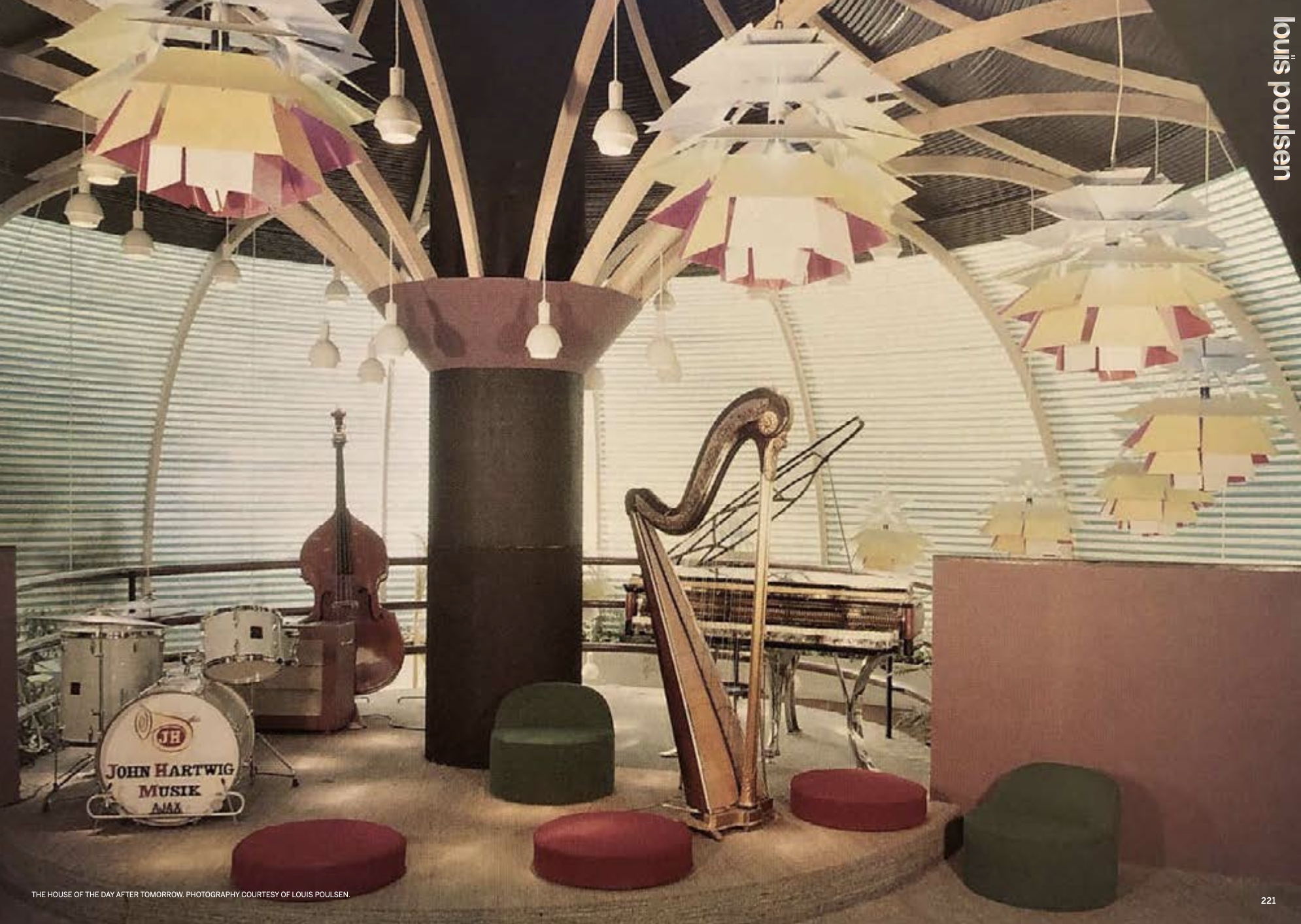
About Louis Poulsen
Established in 1874, Louis Poulsen, the original house of light, creates iconic products that provide exceptional light. Honoring the Danish design tradition, Louis Poulsen designs are based on the principle that form follows function. Working in close collaboration with prominent designers like Poul Henningsen, Arne Jacobsen, Verner Panton, Vilhelm Lauritzen, Øivind Slaatto, Olafur Eliasson, Oki Sato and Anne Boysen, Louis Poulsen continues to build on its legacy of creating luxury lighting with the help of passionate craftsmanship, quality materials and innovative designs. Louis Poulsen has established itself as a leading architectural and decorative lighting brand and has a global presence with showrooms in Copenhagen, New York, Oslo, Tokyo, Singapore and Dusseldorf. louispoulsen.com
About Sotheby’s
Established in 1744, Sotheby’s is the world’s premier destination for art and luxury. Sotheby’s promotes access to and ownership of exceptional art and luxury objects through auctions and buy-now channels including private sales, e-commerce and retail. Our trusted global marketplace is supported by an industry-leading technology platform and a network of specialists spanning 40 countries and 70 categories, which include Contemporary Art, Modern and Impressionist Art, Old Masters, Chinese Works of Art, Jewelry, Watches, Wine and Spirits, and Design, as well as collectible cars and real estate. Sotheby’s believes in the transformative power of art and culture and is committed to making our industries more inclusive, sustainable, and collaborative. sothebys.com
